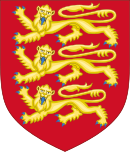This article needs additional citations for verification. (June 2022) |
| This article is part of a series within the Politics of the United Kingdom on the |
 |
|---|
The history of local government in England is one of gradual change and evolution since the Middle Ages. England has never possessed a formal written constitution, with the result that modern administration (and the judicial system) is based on precedent, and is derived from administrative powers granted (usually by the Crown) to older systems, such as that of the shires.
The concept of local government in England spans back into the history of Anglo-Saxon England (c. 700-1066), and certain aspects of its modern system are directly derived from this time; particularly the paradigm that towns and the countryside should be administrated separately. In this context, the feudal system introduced by the Normans, and perhaps lasting 300 years, can be seen as a 'blip', before earlier patterns of administration re-emerged.
The dramatic increase in population, and change in population distribution caused by the Industrial Revolution necessitated similarly dramatic reform in local administration in England, which was achieved gradually throughout the 19th century. Much of the 20th century was spent searching for an idealised system of local government. The most sweeping change in that period was the Local Government Act 1972, which resulted in a uniform two-tier system of counties and districts being introduced in 1974; however, further waves of reform have led to a more heterogeneous system in use today.